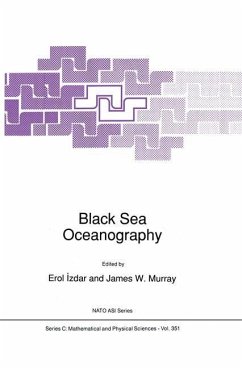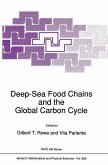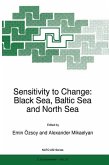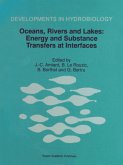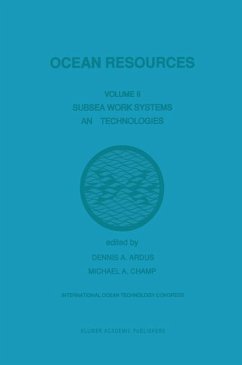Anoxic basins are ofgreat interest to oceanographersofall disciplines. Theirextreme conditionsresult from acombinationofhigh oxygen utilization and restricted circulation. It is necessery to understand present -day anoxic environments ifwe are to understand the early evolution of the oceans (e.g. SiIlen, 1965). Sarmiento et al.(1988a) explored the causes of anoxia in the global ocean, which is in effect a "closed" basin and in marginal seas such as the Eastern Mediterranean (Sarmiento et al. 1988b). Anoxic conditions have been proposed toexist in various ocean basins at different times in the geological past (e.g. the Crataceous period; Weissert, 1981) and possibly as recent as the last glacial maximum (e.g., Sarmiento and Toggweiler,1984). The modern Black Sea has been considered as the type anoxic basin. It is the world's 2 3 largest permanaently anoxic basin (area = 423,000 km ; volume = 534,000 km ) and is thought to be aquasi-steady state system. It is extremely isolated from the rest ofthe world's oceans. Only the narrow and shallow Bosporus Strait provides water exchange with the Mediterranean. Concentrationsofhydrogen sulfide reach valuesof350 Mm in the deep water and the oxygen-hydrogen sulfide Interface exists between 80 and 200m waterdepth. The hydrographic regime is characterized by low salinity surface water of riverine origin overlying high salinity deep waterofMediterranean origin. Asteep pycnocline is the primary phycical barrier to mixing and is the origin of the stability of the anoxic interface.
Hinweis: Dieser Artikel kann nur an eine deutsche Lieferadresse ausgeliefert werden.
Hinweis: Dieser Artikel kann nur an eine deutsche Lieferadresse ausgeliefert werden.

